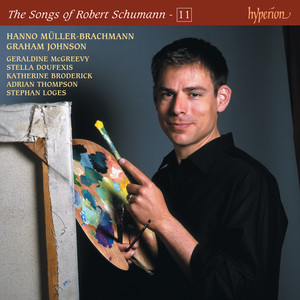
Schumann: The Complete Songs, Vol. 11
- 演奏: Graham Johnson (钢琴)
- 发行时间:2009-01-01
- 唱片公司:Hyperion
- 类型:录音室专辑
- 歌曲
- 时长
-
作曲家:Robert Schumann( 罗伯特·舒曼)
-
作品集:Schumann: 6 Gesänge, Op. 89
-
作品集:Schumann: 3 Gesänge, Op. 83
-
作品集:Schumann: 5 Lieder und Gesänge, Op. 127
-
作品集:Schumann: 3 Gesänge, Op. 95
-
作品集:Schumann: Minnespiel, Op. 101
-
作品集:Schumann: 6 Gedichte aus dem Liederbuch eines Malers, Op. 36
-
作品集:Schumann: Des Sängers Fluch, Op. 139
-
作曲家:Robert Schumann( 罗伯特·舒曼)
简介
舒曼艺术歌曲全集的第11卷,由男中音Hanno Müller-Brachmann与钢琴家Graham Johnson共同呈现。本辑收录了Op.36、Op.89等多部声乐套曲,展现了舒曼在不同创作阶段对诗歌意境的深刻捕捉。从Minnespiel的浪漫叙事到Des Sängers Fluch的戏剧张力,两位艺术家以默契的配合诠释了德奥艺术歌曲的深邃与诗意。舒曼旋律中流淌的诗意与人性哲思,在这里得到细腻而饱满的呈现。

